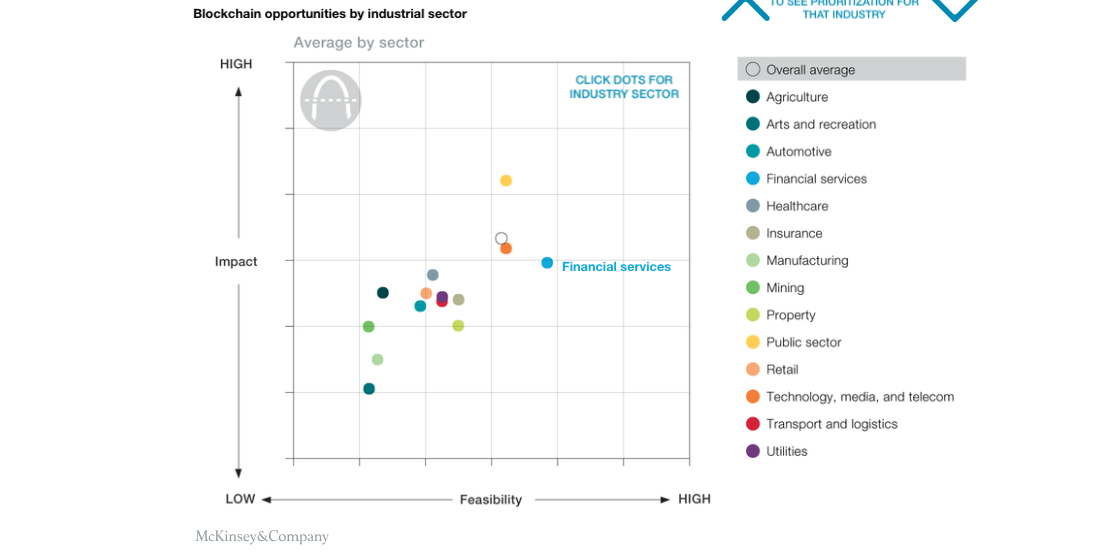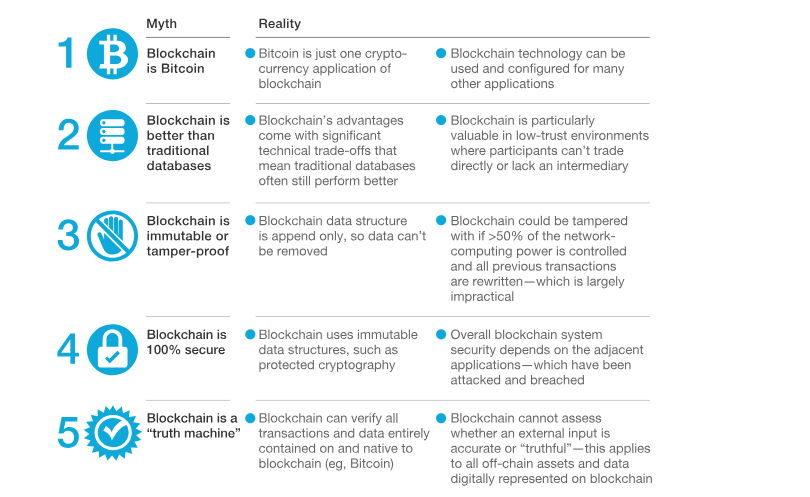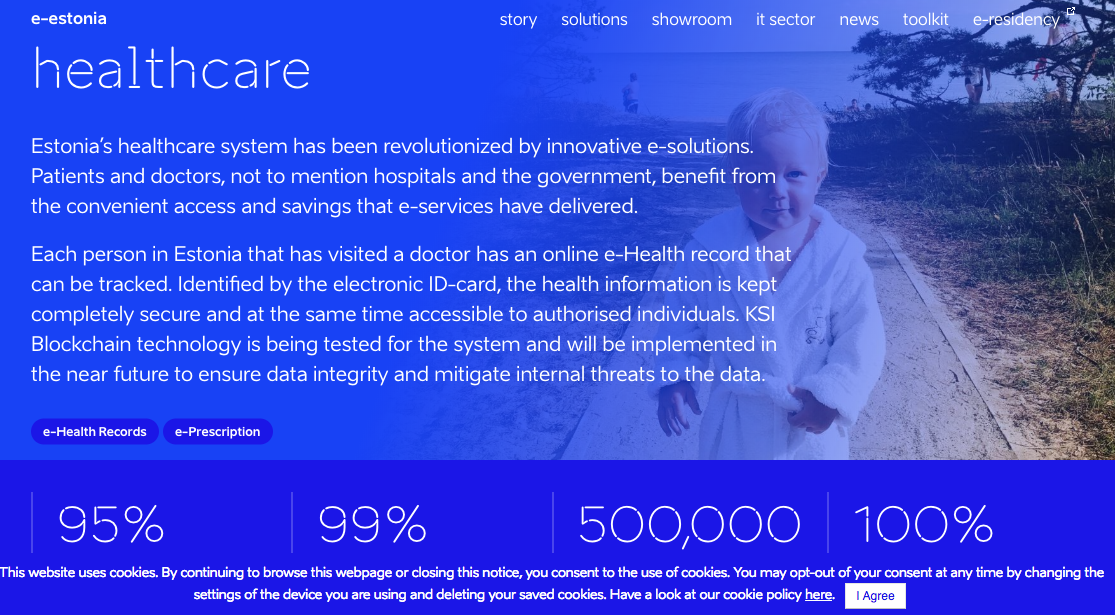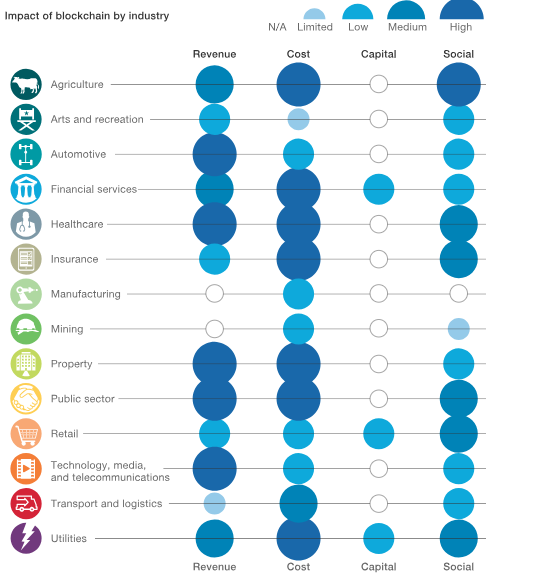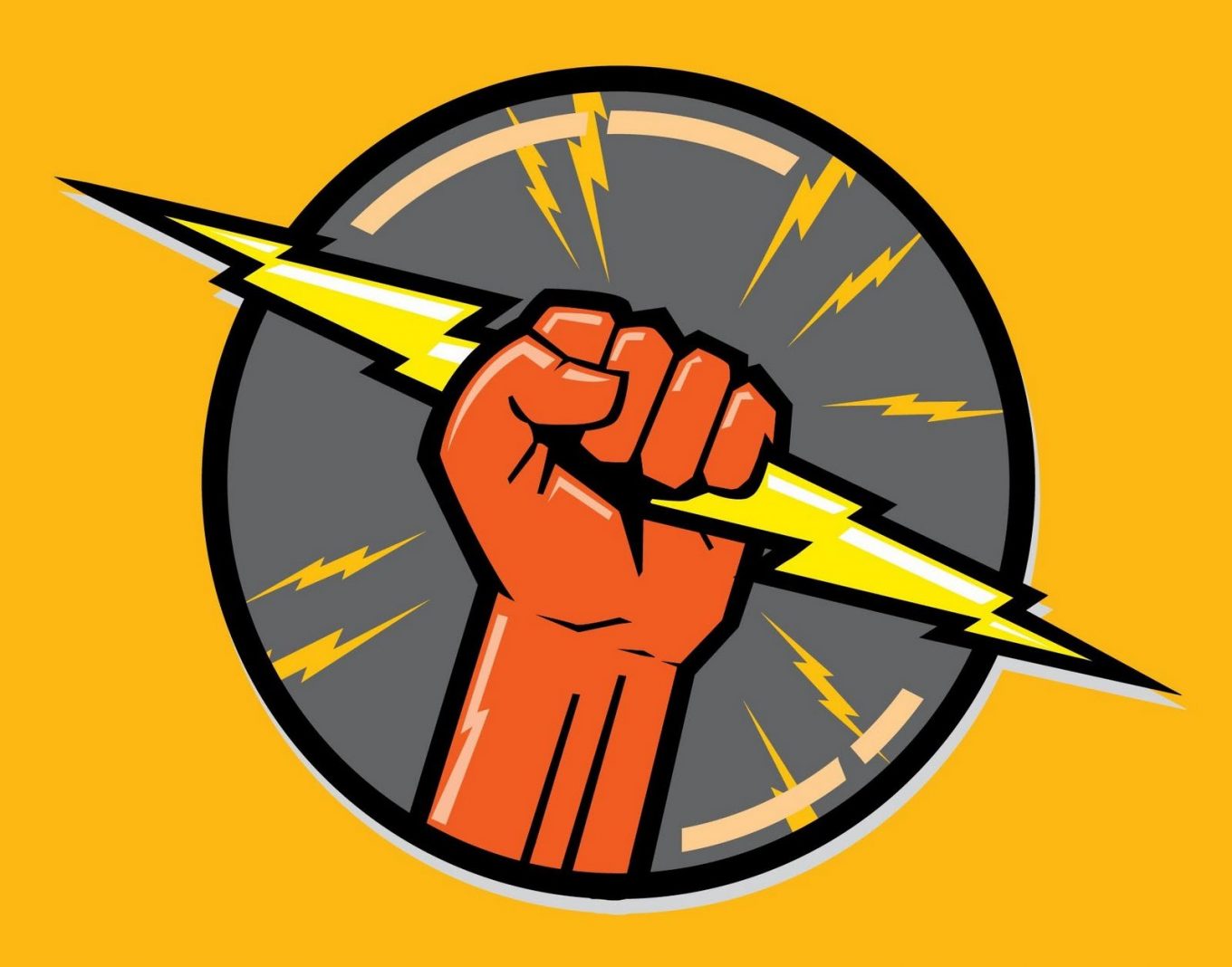-
Blockchain: A Road Map To Its Strategic Application in Business -
Blockchain Opportunities by Industry Sector. In “Blockchain beyond the hype: What is the strategic business value?” in McKinsey and Company - Blockchain does not have to be a disinter-mediator to generate value, a fact that encourages permissioned commercial applications.
- Blockchain’s short-term value will be predominantly in reducing cost before creating transformative business models.
- Blockchain is still three to five years away from feasibility at scale, primarily because of the difficulty of resolving the “coopetition” paradox to establish common standards.
-
5 Myths about blockchain. In “Blockchain beyond the hype: What is the strategic business value?” in McKinsey and Company - financial services,
- government,
- healthcare.
- standards and regulations,
- technology,
- asset,
- ecosystem
-
Estonia Healthcare system -
Impact of Blockchain by Industry. In “Blockchain beyond the hype: What is the strategic business value?” in McKinsey and Company
Almost 10 years ago, on the 18th August 2008, the domain name bitcoin.org was registered. As usual in history, no one was back then aware how that little step would originate so much promise of change in history in just one decade. The inception of bitcoin, would later on originate various others inventions, all assembled together in the umbrella term of Blockchain technology. Blockchain, is now, a topic filled with promises, hopes, and holding the potential from new transformative business opportunities. So much so, that blockchain was one of the hot topics at Davos’s World Economic Forum, with a survey suggesting that 10 percent of global GDP will be stored on blockchain by 2027.
Another sign of the impact the technology is having in our world is how large investments are increasingly being allocated to blockchain projects. Venture-capital funding for blockchain reached the value of $1 billion in 2017 and last year we say a multitude of initial coin offerings (ICOs), assembling together the value of $5 billion. The blockchain ecosystem has attracted the attention of not only entrepreneurs and startups, but established technological companies, such as IBM, Oracle, Amazon, Baidu and other, all experimenting with and launching now various BaaS.
But blockchain is still in its infancy. A recent report from McKinsey, suggests that there will be in between 3 to 5 years, until the blockchain will truly enable the creation of new business models. Their report, provides valuable insight for entrepreneurs and startups experimenting with blockchain. The report provides key insights on the strategic value of blockchain, the key industries where blockchain will be influential, what type of strategy is needed, and the four key factors for success of implementing blockchain projects in a given industry.
The report identifies three key insights on the strategic value of blockchain.
Their advise to companies is to engage in a structured approach in their blockchain strategies. They write:
1.Identify value by pragmatically and skeptically assessing impact and feasibility at a granular level and focusing on addressing true pain points with specific use cases within select industries.
2. Capture value by tailoring strategic approaches to blockchain to their market position, with consideration of measures such as ability to shape the ecosystem, establish standards, and address regulatory barriers.
Even if all of us know this again, it is never too much to repeat how Blockchain works how it is basically and simply, a database, that is shared across a public or private computing network. The database uses encryption to actualise any new bit of information, a new “block” which is added to the chain of historical records. The ledger can also be programmed with “smart contracts,” a set of conditions recorded on the blockchain, so that all kinds of operations happen automatically when the conditions are met.
The unique potential of blockchain for the future, thus, concerns the way it is innovating how and where a database is located. It is there that resides its potential: the one of becoming a new open-standard protocol for trusted records, identity, and transactions. Maybe in a few decades we can say goodbye to the old central institutions in charge of managing, storing, and funding a database. The old dream of peer-to-peer models where any contributions of data by its participants are paid (through tokens and a share in the assets of the platform) , can eventually become commercially viable. This requires a mentality shift and an understanding of the way blockchain operates that is substantial.
The possible disruption blockchain brings to the business landscape is certainly tremendous, but for now, some industries are more fit to seek out blockchain solutions than others. The following sectors are the ones capturing the greatest value:
Financial services’ main functions all happen around the capabilities of verifying and transferring financial information and assets, so evidently blockchain is extremely fit as a new solution with immense potential to cut intermediaries. No wonder that most project happening with blockchain are emerging in the fintech sector. Its potential is so huge that banks are already experimenting or investing in blockchain.
Governments’ operations, again, concern key record-keeping and verifying functions, so this is a sector, again, that can benefit from blockchain technology. Data resulting from civil operations such as birth certificates, taxes, social services could benefit from blockchain-based records and smart contracts, bringing simplicity and increased data security. No wonder that governments across the world are investigating and developing pilot programmes using blockchain technology.
Finally, there is no much to say about the potential blockchain gives to the healthcare sector. Evidently this would imply an openness by key players to be willing to embrace data availability and exchange across providers, patients, insurers, and researchers. Mckinsey report says:
“Blockchain-based healthcare records can not only facilitate increased administrative efficiency, but also give researchers access to the historical, non–patient-identifiable data sets crucial for advancements in medical research. Smart contracts could give patients more control over their data and even the ability to commercialize data access. For example, patients could charge pharmaceutical companies to access or use their data in drug research. “
The four key factors to enable feasibility in a Blockchain project
The report also identifies four key factors that determine a use case’s feasibility in a given industry and what is preventing the technology to move forward:
Concerning standards there is still a lot to be done, as there is lack of common standards. Governments have a key role here, and this is urgently needed, so the technology is able to scale. A practical example of a solution for the scaling is through solutions off chain backed by Governments. Estonia is experimenting with an hybrid solution with its health records. If these are still in databases “off chain” (meaning not stored on blockchain), blockchain is used to identify, connect, and monitor these health records as well as who can access and alter them.
Concerning technology, there is considerable lack still, of sufficient and skilled developers and startups providing stable credibility, for enabling governments and larger industries to use blockchain in a scalable way. As I mentioned previously, large companies such as IBM, Oracle and others, are trying to develop their own blockchain as a service (BaaS) offerings.
Concerning assets, there is the need, if blockchain grows, that all assets must be able to be digitized. Imagine blockchain connected with a specific industry of supply chain of food for example ? We can easily see how this brings us a whole array as that would imply the integration of other technologies, such as IoT and biometrics. This connection still needs to be figured out, as it can be a vulnerability in the security of a blockchain ledger because while the blockchain record might be immutable, that is not the case with a physical item or IoT sensors, as these change over time.
Finally concerning the ecosystem there is the need to have in mind the tremendous amount of integration and coordination needed. For a blockchain project to scale, there will be the need of the network effect, but with it, the degree of complex coordination between various players will increase as well. The mindset of competition will need to be overcome as these need now to cooperate. The report states:
“The issue is not identifying the network—or even getting initial buy-in—but agreeing on the governance decisions around how the system, data, and investment will be led and managed. Overcoming this issue often requires a sponsor, such as a regulator or industry body, to take the lead.”
As we can see if blockchain technology provides businesses with plenty of opportunities, there is the need for a new strategy and change in mindset, as the technology is leading us to the creation, in the longer term, of new business models. The key factors identified in this text may help companies move forward. If the recent growth of blockchain as a service (BaaS) is helping companies in their initial stages of experimentation, it is important as well to have in mind fundamental feasibility factors , and a clear notion of what can be scaled and what type of strategy it is needed.

Maria Fonseca is the Editor and Infographic Artist for IntelligentHQ. She is also a thought leader writing about social innovation, sharing economy, social business, and the commons. Aside her work for IntelligentHQ, Maria Fonseca is a visual artist and filmmaker that has exhibited widely in international events such as Manifesta 5, Sao Paulo Biennial, Photo Espana, Moderna Museet in Stockholm, Joshibi University and many others. She concluded her PhD on essayistic filmmaking , taken at University of Westminster in London and is preparing her post doc that will explore the links between creativity and the sharing economy.




















